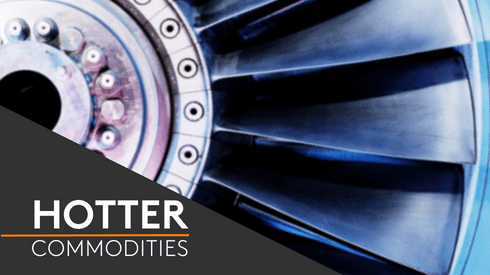There are many dynamics at play over the next ten years with the unprecedented growth of the electric vehicle (EV) market and companies striving for net-zero goals. Market participants and investors need clarity to make long-term and significant pricing decisions.
Fastmarkets’ Peter Hannah evaluates some of the key lithium pricing trends that are emerging, as well as assesses the value in spot versus contract pricing in this ever-changing market.
Gain long-term clarity in the lithium market with the Fastmarkets NewGen Lithium Long-Term Forecast.
What are the current key lithium pricing trends?
The major trend is that lithium prices have seen a dramatic run-up over the past two years. We now have spot prices on a seaborne-delivered basis for both lithium carbonate and hydroxide between $80-90/kg (these were $70-80/kg at the time of recording). Those elevated price levels reflect the fact that lithium has effectively become the limiting factor in the growth of the battery industry.
Fundamentally, the supply side of this market hasn’t been able to keep pace with the acceleration in demand and the market is extremely tight. However, these price levels are a huge incentive for existing or potential producers to accelerate their path to market with new material. We can expect to see substantial increases in supply over the coming years. Whether that will be enough and how long it might take to meaningfully balance the market and result in a sustained downward price correction is difficult to say and only time will tell.
Beyond the price action itself, another key trend that we have observed is a change in approaches to pricing. The historical norms of negotiating fixed prices for long-term contracts has given way to a more dynamic pricing structure, where contracts for agreed durations and volumes are being linked directly to spot indices for their price settlement. Most prominently, the Fastmarkets cif China, Japan and Korea benchmarks for both carbonate and hydroxide.
How can understanding these changes help navigate the lithium market?
If you’re participating or looking to participate in this market, it’s important to recognize that the legacy practices and structures around pricing are fast changing. It’s also crucial to get to grips with the principles of the market-based, marginal tonne pricing mechanism, understand how indices work and how to apply them in contracts.
Beyond that, learning how to access and utilize exchange-based derivatives markets to hedge prices into the future will allow participants to operate most optimally in this market over the years to come. Furthermore, understanding exactly what an index price represents in terms of its specification, basis and how it was formed is critical to be able to use it most appropriately in the contract. No two contractual negotiations are the same and, in a complex market like lithium, considerations around quality and commercial factors are going to influence the premiums and discounts that might be negotiable above or below the benchmark index.
Is it important to pay attention to spot prices for lithium as much as contract prices?
In more mature markets, including some other battery materials like nickel and cobalt, the distinction between spot and contract prices as being something different from one another is almost non-existent. They are effectively one and the same because in those markets, contracts are linked to the averages of spot prices over time. We believe that this is also the future for the lithium market. We can already that shift taking place, although it may take a few more years to play out in full.
In the meantime, it is important to pay attention to all relevant price points in the market, including both spot and prevailing contract levels. Those looking at lithium equities or looking to value companies along the battery supply chain should be paying particular attention to the prices being realized under those supply contracts. However, if you are looking to interpret market conditions, then spot prices are a much more instructive reflection of market balance at a given point in time.
The spot market is where real, competitive price discovery takes place. In contrast, agreements that might have been made months or years ago are, from a price discovery perspective, essentially ancient history.
It is true that lithium trade still does flow around the world under a wide range of prices. But, if you were in the market today with the intention of buying or selling a cargo, then there is very much a ‘price of the day,’ which is going to dictate within a narrow band the sort of price level at which you are going to be able to do that. That is significant when we consider how far the lithium market has evolved over the past few years.
How we can help you manage price risk
Fastmarkets NewGen lithium futures contracts give you access to risk management solutions as you make strategic business decisions.
You can also read further insights on our dedicated page for lithium analysis.





